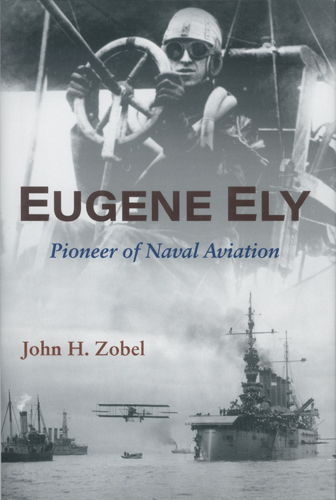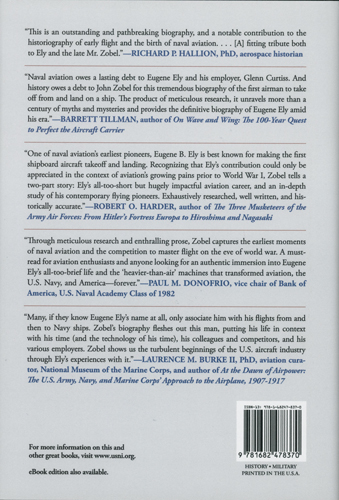Eugene Ely. Pioneer of Naval Aviation
Книга на английском языке
When Eugene Ely took off from a makeshift flight deck in November 1910, he became the first person in history to fly an airplane off a ship. Two months later he set another first when he landed on another makeshift deck.
Ely came of age during a breathtaking surge in the evolution of transportation technology. The modern bicycle was invented shortly before he was born. By the time he was in his teens he was racing automobiles, and at the age of twenty-four he proved it was possible to land a fragile biplane on the deck of a ship—only seven years after the Wright Brothers made the first heavier-than-air powered flight at Kitty Hawk.
Ely’s story is tied to the intense rivalry between the Wright Brothers and Glenn Curtiss to dominate production of the world’s first airplanes, and to the brief, electrifying era of flying exhibitions, when Americans witnessed the miracle of human flight for the first time. He captured the public’s imagination as one of America’s original “birdmen.” He was a civilian aviator; military aviation did not yet exist. Opinions among the Navy’s leadership were divided as to whether the airplane could have practical military applications. When Capt. Washington I. Chambers took bold steps to demonstrate the airplane’s potential, he tapped Ely to attempt the first shipboard launch off USS Birmingham. Ely’s success in that experiment led soon afterward to his landing on USS Pennsylvania, securing his place in history.
But his demonstrations for the Navy were just the beginning. They unfolded against the backdrop of increasing tensions between the U.S. and Germany in the years preceding World War I and ignited debate over the ethics of using airpower offensively in warfare—a debate that would be settled by the coming war.
The story of Eugene Ely’s life is the stuff of myth and legend. Much of what has been written about him relies on sensationalized newspaper accounts from an era when early twentieth-century reporters unabashedly fabricated stories to increase newspaper circulation. Those accounts portray Ely as a reckless daredevil and are essentially historical fiction.?Eugene Ely: Pioneer of Naval Aviation cuts through the sensationalism by relying on primary sources and photographic records and triangulating multiple sources to arrive at an honest portrait of the man and his legacy. The result is the story of a quiet, self-effacing Iowan who did extraordinary things. Ely’s measured approach and calculated demonstrations of the potential of military aviation ultimately pointed the way to today’s modern aircraft carriers, more than a century later.
Contents
Introduction
1. Son of York
2. Rise of the wheelmen
3. Fire and earth
4. Into the air
5. Road to the sky
6. Flying lessons
7. Outlaw
8. On the team
9. Loftier goals
10. Endurance
11. The war in the air
12. Belmont stakes
13. The race with the floating zoo
14. Ship to shore
15. Star-dust falling
16. The dove to the ark
17. Water and air
18. Twists and corkscrews
19. War machine
20. Full circle
21. Spiral glide
22. Off guard
23. Full measure
24. The world before him
Afterword by hon. Hiller b. Zobel
Acknowledgments
Notes
Selected bibliography
Index




